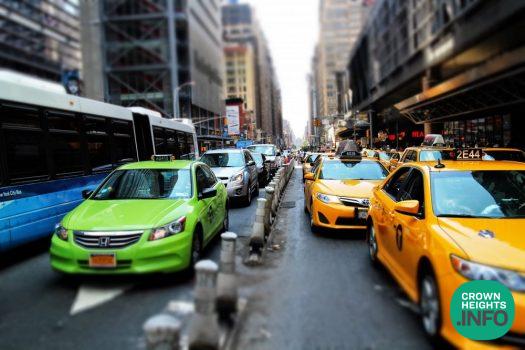
Congestion Pricing Back On? Hochul Unveils New Plan With a 40% Price Reduction
Governor Kathy Hochul today announced a plan to begin implementing congestion pricing in New York City by early January. In keeping with her promise to lower the cost of tolls from $15, the Governor’s plan features a 40 percent reduction in all tolls for vehicles entering the City’s Central Business District (CBD), saving commuters up to $1,500 per year. That plan also includes new tools to reduce congestion and air pollution in communities citywide – all of which will ensure that the plan achieves the goals of congestion pricing, including $15 billion in mass transit funding to support the MTA’s current Capital Program. Additionally, Governor Hochul committed to funding the proposed 2025-2029 MTA Capital Plan that was approved by the MTA Board in September – the largest capital plan for transit in New York State history.
“As I said from the start, a $15 toll was just too high in this economic climate. That’s why our plan cuts the daytime toll to $9 for cars,” Governor Hochul said. “By getting congestion pricing underway and fully supporting the MTA capital plan, we’ll unclog our streets, reduce pollution and deliver better public transit for millions of New Yorkers.”
Governor Hochul’s new congestion pricing plan has already won support from a broad coalition of stakeholders including the Regional Plan Association (RPA), League of Conservation Voters (LCV), Natural Resources Defense Council (NRDC), Partnership for New York City and Real Estate Board of New York (REBNY), among others.
The adjusted phase in feature will be taken up by the MTA Board at its next meeting on November 18. Under this plan, congestion pricing will be ready for implementation at midnight on Sunday, January 5.
CONGESTION PRICING PLAN
Toll Structure and Delivering $15 Billion Over Time for Current MTA Capital Program
Under the plan announced by Governor Hochul today, the toll structure for entering New York City’s CBD (Manhattan below 60th Street) would initially be as follows, starting at midnight on January 5. This structure represents a 40 percent reduction in all tolls:
- Daytime E-ZPass tolls
- Passenger vehicles (once per day): $9
- Motorcycles (once per day): $4.50
- Small trucks and non-commuter buses: $14.40
- Large trucks and sightseeing buses: $21.60
- Tunnel crossing credits reduced by 40 percent of original plan
- Nighttime discounts of 75 percent of daytime tolls
- Per-ride fees for all trips to, from, or within the CBD
- Taxis and black cars: $0.75
- App-based for-hire vehicles: $1.50
For commuters who drive into the CBD five days per week, this 40 percent reduction in the toll will save them approximately $1,500 per year.
Additionally, some eligible drivers will receive additional discounts, credits and exemptions, such as a low-income volume discount or a qualified disability exemption.
While the toll structure under this plan is lower than the tolls initially proposed, it will still enable the MTA to leverage $15 billion in bonds for the MTA’s current Capital Program over time – the same goal for the congestion pricing program. This includes supporting current Capital Program initiatives including:
- Second Ave Subway Phase 2 extension to East Harlem
- Modern signal systems on segments of the A/C and B/D/F/M lines for over 1.5 million daily riders
- Accessibility improvements at more than 20 stations
- Hundreds of new electric buses
Additionally, the administration expects to achieve congestion reduction and air quality benefits set forth in the environmental review for the congestion pricing program, including a 5 percent reduction in vehicle miles traveled and a 10 percent reduction in the number of vehicles entering Manhattan’s CBD.
Pursuant to Governor Hochul’s plan, MTA will not raise the initial tolls beyond the following percentages of the approved structure:
- 60 percent (i.e. a $9 daytime automobile E-ZPass toll) from 2025 through 2027
- 80 percent (i.e. a $12 daytime automobile E-ZPass toll) from 2028 through 2030
The phase-in feature over time will help drivers adapt more easily to the program and give the MTA and other stakeholders the ability to monitor data regarding implementation and effects.
New Proposals to Further Reduce Traffic and Pollution
The Governor is also proposing a package of new measures that will help reduce traffic and air pollution throughout New York City and beyond. These proposals will be included in her Executive Budget proposal in January and will include:
- Expansion of the successful joint MTA-NYC Automated Camera Enforcement program to permit enforcement of “blocking the box” violations at NYC street intersections, helping avoid gridlock and keep traffic moving smoothly.
- Expanded statutory authorization for the use of weigh-in-motion (WIM) technology to help keep overweight vehicles off of our streets and improve traffic flow.
- Raising the threshold value for authorized removal of abandoned derelict vehicles, and permitting the City to impose a surcharge for street permits on construction projects that block traffic lanes, promoting efficient use of our curb space.












